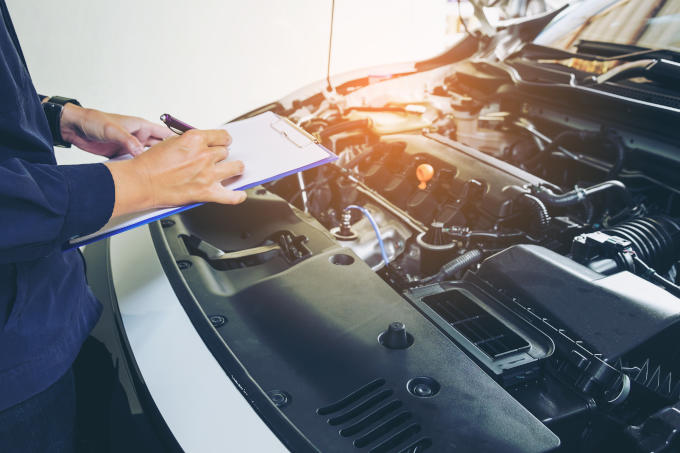Transmission health is crucial for the overall performance and longevity of your vehicle.
In Southern California, unique driving conditions can place additional stress on your transmission, making maintenance even more important. This blog aims to provide SoCal drivers with essential tips to maintain their transmission health, ensuring smooth and efficient vehicle operation.
Table of Contents:
- Understanding Southern California's Driving Conditions
- Transmission Maintenance Tips for High Traffic Conditions
- Managing High Temperatures
- Navigating Varied Terrain
- General Transmission Maintenance Tips
- Expert Help and Resources
- Conclusion
Understanding Southern California's Driving Conditions
High Traffic Volume
Southern California, particularly in urban areas like Los Angeles, is notorious for its high traffic volume. Frequent stop-and-go traffic can place significant strain on your transmission, increasing the risk of overheating and wear.
Traffic congestion means your transmission is constantly shifting gears, which can accelerate wear and tear. The more your vehicle stops and starts, the harder your transmission has to work, especially if your transmission fluid isn't fresh or at the correct level.
High Temperatures
The hot weather in Southern California can impact the transmission fluid, causing it to break down more quickly and reducing its ability to lubricate and cool the transmission effectively. High temperatures can also lead to overheating, which is detrimental to transmission health.
Excessive heat can degrade the transmission fluid, making it less effective at protecting and lubricating the transmission components. This can lead to increased friction and wear, ultimately causing transmission failure if not addressed.
Varied Terrain
SoCal offers a diverse range of driving conditions, from coastal drives with salty air to mountainous regions with steep inclines and declines. Each of these terrains poses unique challenges for your vehicle's transmission.
Mountainous terrain, for instance, requires more frequent shifting and can lead to overheating if your transmission isn't properly maintained. Coastal areas expose your vehicle to salt and moisture, which can cause corrosion and other damage to transmission components if not properly cared for.
Impact of City vs. Highway Driving
City driving, with its constant starting and stopping, places different demands on a transmission compared to steady highway driving. We'll explore how these different driving environments affect transmission health and what drivers can do to mitigate these effects.
City driving can cause more wear on the transmission due to frequent shifting, while highway driving, despite being more consistent, can still lead to issues if the transmission fluid isn't maintained at the correct levels and quality.
Transmission Maintenance Tips for High Traffic Conditions
Regular Fluid Checks
It's essential to regularly check your transmission fluid levels and quality. Low or degraded fluid can lead to increased friction and heat, damaging your transmission over time. Make it a habit to check your fluid levels at least once a month and before long trips.
Keeping an eye on the color and smell of your transmission fluid can also help you identify potential issues early. Transmission fluid should be a clear, bright red. If it looks dark or has a burnt smell, it may be time for a change.
Avoid Overheating
Preventing transmission overheating is crucial, especially in stop-and-go traffic. Ensure your transmission cooler is functioning properly, and consider installing an auxiliary transmission cooler if you frequently drive in heavy traffic.
Overheating can cause significant damage to your transmission, leading to costly repairs or even complete transmission failure. Using your vehicle's air conditioning system can also help keep the engine and transmission cooler in hot weather.
Use of Proper Gear
Using the correct gear can help reduce strain on your transmission. In stop-and-go traffic, avoid using overdrive and stick to lower gears. This can help maintain optimal transmission performance and prevent unnecessary stress.
Using lower gears reduces the load on your transmission and helps keep it cooler, which is particularly important in heavy traffic conditions. It's also a good idea to avoid shifting into park or neutral when stopped at a light, as this can cause additional wear on the transmission.
Maintenance for Frequent Commuters
Frequent commuters face specific challenges. This section provides additional tips tailored for those who spend a lot of time in traffic, such as staggered work hours to avoid peak traffic times and alternative routes that may be less congested.
Using a GPS or traffic app can help you find less congested routes, reducing the strain on your transmission. Additionally, consider carpooling or using public transportation when possible to reduce wear and tear on your vehicle.
Managing High Temperatures
Fluid Quality
Using high-quality transmission fluid that can withstand high temperatures is vital for maintaining transmission health. Look for fluids that are specifically designed for high-temperature environments to ensure optimal performance and protection.
Synthetic transmission fluids are often better suited for high-temperature conditions, as they offer better heat resistance and longer-lasting protection compared to conventional fluids. Always use the type of fluid recommended by your vehicle's manufacturer.
Cooling System Maintenance
Your vehicle's cooling system plays a significant role in preventing transmission overheating. Regularly inspect and maintain your cooling system, including the radiator, coolant levels, and hoses, to ensure they are in good working condition.
A well-maintained cooling system helps keep your engine and transmission temperatures in check, reducing the risk of overheating. Make sure to check for leaks and replace any worn or damaged components to ensure your cooling system is functioning properly.
Driving Habits
Adjusting your driving habits during extreme heat can help protect your transmission. Avoid aggressive driving, such as rapid acceleration and hard braking, which can generate excessive heat. Instead, drive smoothly and steadily to keep your transmission temperature in check.
Planning your trips to avoid the hottest parts of the day can also help protect your transmission. If possible, try to drive during the early morning or late evening when temperatures are cooler.
Seasonal Adjustments
Different seasons in Southern California bring varying temperature challenges. This section will discuss how to adjust your maintenance routines and driving habits for summer and winter to ensure your transmission remains in optimal condition.
In the summer, it's especially important to monitor your transmission fluid levels and quality, as high temperatures can cause fluid to degrade more quickly. In the winter, while temperatures are generally milder in SoCal, it's still a good idea to keep an eye on your transmission fluid and ensure your cooling system is functioning properly.
Navigating Varied Terrain
Mountain Driving Tips
When driving in mountainous areas, use lower gears to manage steep inclines and declines. This reduces the strain on your transmission and prevents overheating. Additionally, avoid riding the brakes, as this can cause overheating and wear.
Using engine braking by downshifting can help reduce the load on your brakes and transmission, especially on long downhill stretches. Make sure your transmission fluid is fresh and at the proper level before heading into the mountains.
Coastal Driving Tips
Salty air and moisture from coastal drives can corrode transmission components. After driving in coastal areas, rinse the underside of your vehicle to remove salt and moisture. Regular inspections and maintenance can help detect and address any corrosion-related issues early.
It's also a good idea to use a rust inhibitor or protective coating on your vehicle's undercarriage to help prevent corrosion. Regularly washing your vehicle, especially the undercarriage, can also help remove salt and moisture.
Regular Inspections
After long trips on varied terrain, have your transmission inspected by a professional. This ensures any potential issues are identified and addressed promptly, preventing costly repairs and extending the life of your transmission.
Regular inspections can help catch minor issues before they become major problems, saving you time and money in the long run. Make sure to keep detailed records of all maintenance and inspections to help track the health of your transmission over time.
Off-Road Adventures
For those who enjoy off-road adventures, it's important to understand the additional stresses this can place on your transmission. Learn how to prepare your vehicle for off-road conditions and the post-trip maintenance required to keep your transmission healthy.
Off-road driving can cause increased wear on your transmission, especially if you're navigating rough or uneven terrain. Make sure your transmission fluid is fresh and at the correct level before heading off-road, and inspect your vehicle thoroughly after each trip to identify any potential issues.
General Transmission Maintenance Tips
Scheduled Maintenance
Follow the manufacturer's recommended maintenance schedule for your vehicle. This includes regular transmission inspections, fluid changes, and any necessary adjustments to keep your transmission in top condition.
Sticking to the recommended maintenance schedule helps ensure your transmission remains in good working order and can prevent costly repairs down the line. Make sure to use the correct type of transmission fluid and replace it at the recommended intervals.
Regular Fluid Changes
Regular transmission fluid changes are crucial for maintaining transmission health. Old, degraded fluid can lead to increased friction, heat, and wear. Follow the manufacturer's guidelines for fluid change intervals to ensure optimal performance.
Regular fluid changes help remove contaminants and debris that can cause damage to your transmission components. Make sure to use the correct type of fluid recommended by your vehicle's manufacturer and replace the transmission filter if applicable.
Addressing Issues Promptly
Pay attention to signs of transmission problems, such as strange noises, slipping gears, or delayed shifting. Addressing these issues early can prevent more severe damage and costly repairs.
If you notice any problems, consult a professional mechanic immediately. Ignoring transmission issues can lead to more serious problems and higher repair costs.
Common signs of transmission problems include grinding or whining noises, burning smells, and difficulty shifting gears. If you experience any of these symptoms, have your transmission inspected as soon as possible.
Transmission Upgrade Options
Explore the benefits of upgrading your transmission components, such as installing a high-capacity transmission cooler or switching to synthetic transmission fluid. These upgrades can improve performance and extend the life of your transmission, especially under the demanding conditions of SoCal driving.
Upgrading to a high-capacity transmission cooler can help keep your transmission temperatures in check, reducing the risk of overheating. Synthetic transmission fluids offer better heat resistance and longer-lasting protection compared to conventional fluids, making them a good option for high-temperature environments.
Expert Help and Resources
Professional Inspections
Having your transmission inspected by a professional can help identify potential issues before they become major problems. Professional mechanics have the expertise and tools to thoroughly check your transmission and recommend necessary maintenance or repairs.
Regular professional inspections can help ensure your transmission remains in good working order and can prevent costly repairs down the line. Make sure to choose a reputable mechanic with experience in transmission maintenance and repair.
Local AAMCO Centers
AAMCO centers in Southern California offer expert transmission services. With experienced technicians and state-of-the-art equipment, AAMCO can provide comprehensive transmission inspections, maintenance, and repairs to keep your vehicle running smoothly.
AAMCO's network of service centers makes it easy to find professional transmission care near you, ensuring your vehicle receives the best possible maintenance and repair services. Visit your local AAMCO center for a thorough transmission inspection and maintenance check.
Resources and Tips
For additional resources and tips on maintaining transmission health, visit AAMCO SoCal's blog and website. You'll find valuable information to help you take care of your vehicle's transmission and ensure its longevity.
AAMCO's online resources include maintenance guides, tips for preventing transmission problems, and advice on how to choose the right transmission fluid for your vehicle. Stay informed and proactive about your transmission maintenance to keep your vehicle in top condition.
Warranty Claims Process
Get insights into the process of filing a warranty claim for transmission issues. Knowing what to expect can streamline the process and ensure you get the necessary repairs covered.
Understanding the warranty claims process can help you avoid delays and ensure your repairs are covered. Keep detailed records of all maintenance and repairs, as these may be required when filing a warranty claim. Contact your warranty provider as soon as you notice any transmission issues to start the claims process.
Conclusion
Transmission maintenance is essential for the overall health and performance of your vehicle. By understanding Southern California's unique driving conditions and following these maintenance tips, you can protect your transmission and extend its lifespan.
For professional transmission services, visit AAMCO SoCal and let our experts help keep your vehicle in top condition. Regular maintenance, timely inspections, and addressing issues promptly are key to ensuring your transmission health remains in working order. Adopting these tips will help you navigate SoCal's challenging driving conditions with confidence and peace of mind.

 Schedule Appointment
Schedule Appointment















